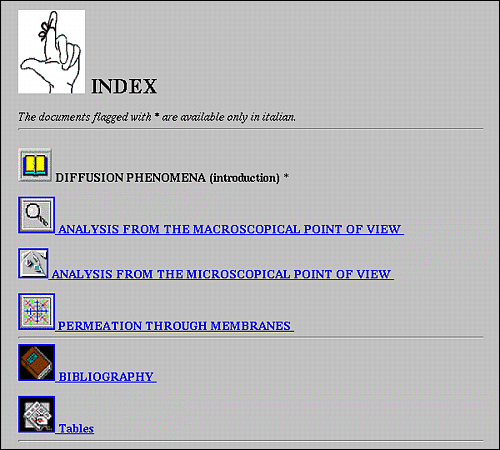
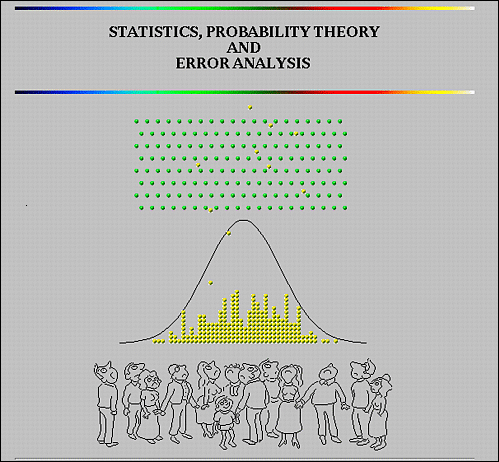
Gianni Cattani
Francesco Luigi Navarria
Tiziano Rovelli
Department of Physics, Bologna University
Faculty of Pharmacy, Bologna University
INFN - Bologna, Italy
cattani@bo.infn.it
navarria@bo.infn.it
rovelli@bo.infn.it
Abstract
The aim of the ISHTAR project is to build tools on the Web to help students to learn physics using hypermedia. The course is mainly intended for students of life sciences such as Medicine, Biology or Pharmacy, not requiring an in-depth knowledge of mathematics.
The package we present, elaborated within the didactics of physics, is divided in two levels designed to fit different students' background. It first develops the most important concepts of statistics, probability theory and error analysis, and the ultimate goal is to provide an exaustive treatment of these subjects.
The package exploits the Web capacities in terms of communication and includes Java applets created to improve the interactivity level.
We are, at present, also developing two chapters on mechanics and thermodynamics.
ISHTAR (Innovative Software for Higher-education Telematics Applications R. & d.) is a project under development at the Department of Physics of the University of Bologna.
The purpose of this work is to create interactive tools on the Web to
help students to learn some chapters of the physics course.
Initially the ISHTAR project had more ambitious goals, such as producing a
virtual laboratory, in a collaboration between the Physics Departments of
the Universities of Athens, Bologna, Florence and Lisbon.
The project starts with software package about the study of diffusion processes in solutions (Fig. 1 shows the starting page of the package), presented at the Third World Wide Web Conference, Darmstadt, 1995 [1].


The first software package was developed to make it possible for a student
to follow in detail parts of the programme of a General Physics course and to
obtain a working knowledge of specific arguments using a sort of
virtual experiment.
The group working on the project includes people involved both in
software-engineering and education. In this way we hope to build good
software tools and also easily understandable interfaces for the students.
We are currently working on a new hypercourse chapter devoted to
statistics, probability theory and error analysis (Fig. 2 shows the
cover page of the chapter [2]).
The educational material has been divided into two courses: the first
for students who face these arguments for the first time; the second for
general physics or non-physics students who have already some knowledge of
the subjects.
The two courses have separate structures but share common parts such as notes,
mathematical details, applets, etc.
In spite of this it is impossible to jump from one course to the other.
We have done this to prevent students from finding themself in trouble
wandering into a package with too many links and possibilities.
We have used the usual multimedia techniques typical of Web documents and give here a brief decription.
- The text (hypertext) starts from a Table of Contents and
has main pages and others containing notes and more detailed information
(comprising mathematical details)
[3
,
4].
Figure 3 shows an example of four pages taken from the package. They include
text, links, pictures and forms, as frequently found in a Web document.

|
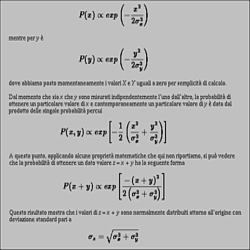
|
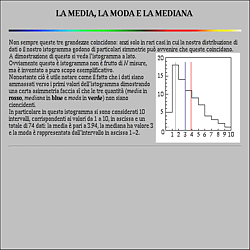
|
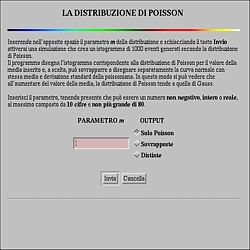
|
- Inlined figures have been introduced to help users to understand the text using graphs, plots, histograms, etc.
- Formulas have been written first in LaTeX [5]and then converted in inlineable images through the use of the LaTeX2HTML [6] package.
- Java applets have been introduced to show statistical behaviour and
to check pseudo-random number generators. Figure 4 shows the applet built to
discover the correlation between randomly generated numbers: this applet
has been downloaded from the net and improved by the members of ISHTAR
[7].
The applet creates and reads a file of pseudo-random numbers generated,
and plots a noise sphere of the data. Poor random number generators will
show clear patterns.
It is possible to select a random number generator from four different kinds:
the java random generator, the additive method, the multiplicative method
and the mixed method random number generators.
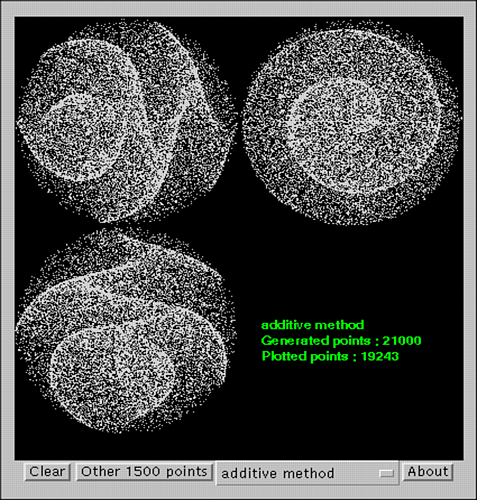
Another applet (see Fig. 5), downloaded from the net and improved by the members of ISHTAR [8], shows how the sample mean tends to the population mean as the sample size increases. It is possible to test it for three different distributions: uniform, exponential and normal distributions.
- Scripts in conjunction with the use of forms have been
created to plot histograms and functions. In this way students can compare
different distributions and verify their behaviour by changing
the parameters.
Scripts have been created using HBOOK
[9],
HPLOT
[10]
and HIGZ
[11]
routines from CERN software libraries to produce Postscript files, and
then the IMAGEMAGICK
[12]
package was used to obtain inlineable GIF files (see Fig. 6).
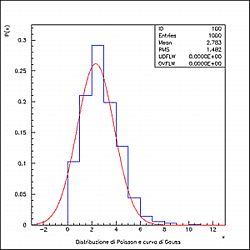
|
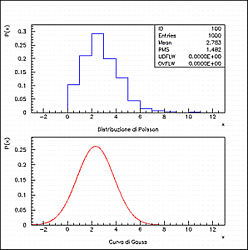
|
This interactivity should stimulate students to repeat experiments,
make comparisons, and develop their own conclusions on the different effects
generated with different parameter values.
This package was developed to give an exaustive introduction of the main
concepts of statistics, probability theory and error analysis: we have
also payed special attention to errors in simulations.
Students are often not able to understand the meaning of error analysis
in a simulation environment: they are inclined to neglect the errors,
being misled by the idea that a computer is a perfect machine and
behaves in a "deterministic" way.
The philosophy, as with the previous package about diffusion, is not to
abandon students in front of a computer, but on the contrary to exploit
its capacity and that of the Web, using them as very useful tools for
educational activities.
To understand the impact of the hypercourse, we are testing our packages with students of the first year of Medical Chemistry of Bologna University.
We are also working on other chapters of the physics course, and hope to provide two new didactical software packages about mechanics and thermodynamics.
We would like to thank Maria Cecilia Coperchio for her help in building Java applets, Riccardo Veraldi for some help in programming, and Ivan Nanni at the Department of Statistics of Bologna University for his suggestions on the topic.